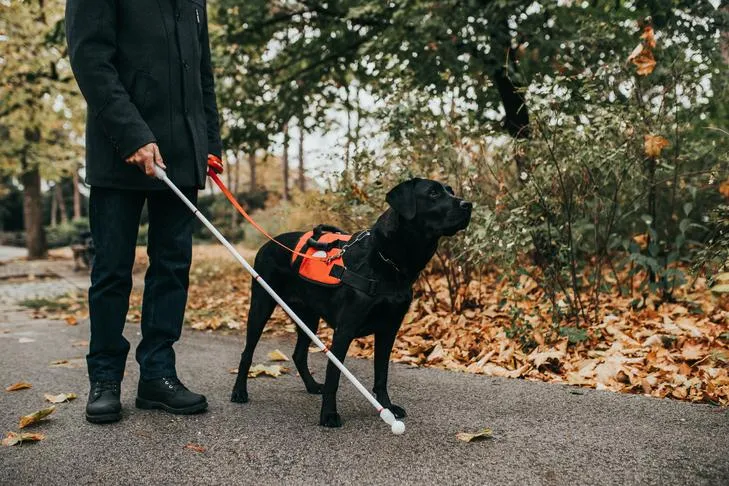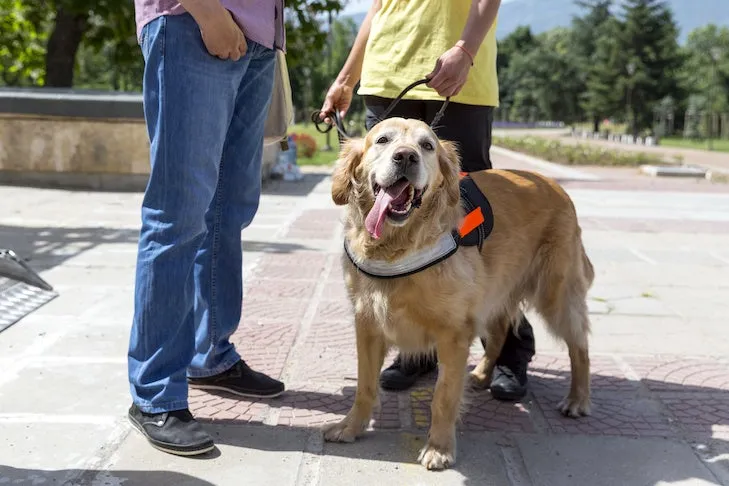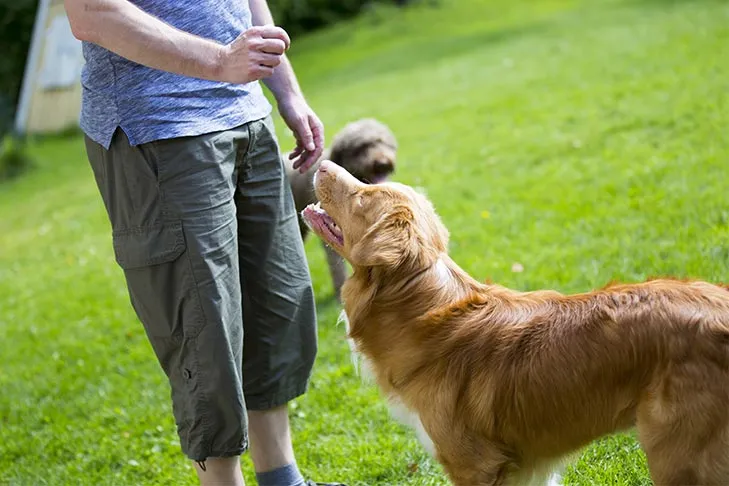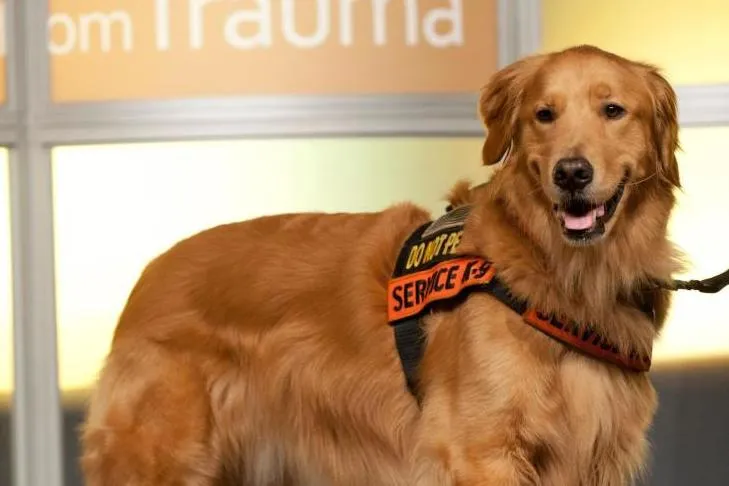Service dogs are more than just pets; they are highly trained assistants who provide invaluable support to individuals with disabilities, enabling them to lead more independent and fulfilling lives. The profound bond and specialized tasks these incredible canines perform demand rigorous, thoughtful training. Whether you’re considering training a service dog yourself or simply want to understand the dedication involved, finding the Best Books For Training Service Dogs is a crucial first step. These resources can illuminate the path from a promising puppy to a life-changing working companion.
The role of service dogs has expanded dramatically over the past decades. Initially recognized primarily as guide dogs for the visually impaired, today’s service dogs assist with a wide array of disabilities, from mobility and medical alerts to psychiatric support. This evolution highlights the complexity and diversity of service dog training. While professional organizations dedicate years and significant resources to producing these highly skilled animals, the Americans with Disabilities Act (ADA) also affirms an individual’s right to train their own service dog. This article delves into the essential literature that can guide aspiring trainers, offering expert insights into the principles and practices of effective service dog preparation.
Understanding the Foundation: What Makes a Service Dog?
Before diving into specific training methodologies, it’s essential to grasp the fundamental definition and purpose of a service dog. According to the ADA, a service dog is “a dog that is individually trained to do work or perform tasks for a person with a disability.” This definition is critical because it differentiates service dogs from emotional support animals (ESAs) or therapy dogs. The task performed must be directly related to the individual’s disability.
The Diverse Roles of Service Dogs
The scope of assistance provided by service dogs is vast and continually expanding. Originally, service dogs were typically guide dogs, assisting individuals with visual or hearing impairments. Breeds like German Shepherd Dogs were commonly employed for their intelligence and loyalty in these roles. Today, many different breeds are trained for a variety of tasks:
- Guide Dogs: Help blind and visually impaired individuals navigate their environments safely.
- Hearing Dogs: Alert deaf and hard-of-hearing individuals to crucial sounds like doorbells, alarms, or a crying baby.
- Mobility Assistance Dogs: Aid individuals using wheelchairs or walking devices, assisting with balance, retrieving items, or opening doors.
- Medical Alert Dogs: Can detect and signal the onset of medical issues such as seizures or low blood sugar, or alert to the presence of allergens.
- Psychiatric Service Dogs: Assist individuals with conditions like PTSD or OCD by performing tasks such as interrupting repetitive behaviors, turning on lights in dark rooms, or reminding them to take medication.
These specialized roles require dogs with specific temperaments and extensive training. The best training books often dedicate sections to understanding these roles and the corresponding skills required, preparing trainers to select and teach dogs appropriate tasks.
Key Qualities for a Service Dog Candidate
Regardless of whether you choose a professionally bred dog or train your own, the success of a service dog largely depends on the dog’s inherent qualities. Not every dog is suited for service work, which is why professional organizations often have high drop-out rates for candidates. When evaluating a potential service dog, look for these traits:
- Calmness: Essential, especially in unfamiliar or stimulating public settings.
- Alertness, Not Reactivity: A service dog must be aware of its surroundings but not easily distracted or aggressive.
- Willingness to Please: A strong desire to work with and obey its handler.
- Ability to Learn and Retain Information: Service dogs learn many complex commands and tasks.
- Sociability and Desensitization: Must be able to remain focused amidst various people, places, sights, sounds, and other animals. Comprehensive socialization is key to this.
- Reliability: The ability to consistently perform repetitive tasks without fail.
These foundational traits are often discussed in comprehensive service dog training books, guiding prospective trainers in selecting the right canine partner.
Top Recommended Books for Training Service Dogs
For those embarking on the journey of training a service dog, a well-chosen book can be an invaluable companion, offering structured guidance, proven techniques, and essential insights. Here are some of the best books for training service dogs, designed to equip you with the knowledge and tools you need.
1. “Service Dog Training: A Comprehensive Guide” by Dr. Eleanor Vance
This book is a cornerstone for anyone serious about service dog training. Dr. Vance, a certified professional dog trainer with extensive experience in assistance dog programs, breaks down the entire process from puppy selection to advanced task training. It covers critical topics such as:
- Puppy Foundation: Early socialization, house training, and basic obedience, often building on principles similar to general obedience but with a service dog focus. Readers interested in broader dog training techniques might also find value in titles like
[dog training books uk](https://dogcarestory.com/dog-training-books-uk/)to complement this foundational knowledge. - Task-Specific Training: Detailed instructions for common service dog tasks across various disability types (mobility, medical alert, psychiatric).
- Public Access Skills: Essential training for a service dog to behave impeccably in public environments, including managing distractions and maintaining focus on the handler.
- Legal & Ethical Considerations: An in-depth look at ADA regulations, handler rights, and the ethical responsibilities of service dog teams.
Why it’s highly recommended: This book stands out for its methodical approach and practical exercises. It emphasizes positive reinforcement and clear communication, making complex training concepts accessible to dedicated individuals.
2. “The Everyday Service Dog: Building a Reliable Partner” by Mark Peterson
Mark Peterson, a seasoned service dog trainer and advocate, focuses on creating a harmonious partnership between handler and dog. This book offers a refreshing perspective, emphasizing that a service dog isn’t just a tool but a living, breathing partner. Key areas include:
- Understanding Canine Behavior: Delving into dog psychology to better understand motivations and improve training outcomes.
- Advanced Obedience & Proofing: Moving beyond basic commands to ensure reliability in challenging situations, a crucial step after establishing core skills.
- Maintaining Training & Preventing Burnout: Strategies for keeping the dog engaged, happy, and effective throughout its working life.
- Problem-Solving: Addressing common training hurdles with compassionate and effective solutions.
Why it’s highly recommended: Peterson’s book excels at fostering a deep understanding of the dog’s needs and how to build a strong, trusting relationship, which is paramount for successful service dog work.
3. “Beyond the Leash: Training Your Service Dog for Specialized Tasks” by Sarah Jenkins
For those who have mastered the basics and are looking to refine specialized tasks, Sarah Jenkins’ book is an excellent follow-up. It assumes a foundational understanding of obedience and focuses intensely on intricate task training. Topics covered include:
- Fine-Tuning Retrievals: Teaching dogs to pick up specific items, open and close doors, and interact with various objects safely.
- Alerting & Detection Work: Advanced scent work for medical alerts and subtle cues for psychiatric tasks.
- Navigational Assistance: Techniques for training guide dogs in complex environments, similar to the precision seen in specialized working dogs often featured in
[fiction books about search and rescue dogs](https://dogcarestory.com/fiction-books-about-search-and-rescue-dogs/). - Customizing Training for Unique Disabilities: Guidance on adapting standard tasks to meet the specific, individual needs of the handler.
Why it’s highly recommended: This book is ideal for trainers seeking to elevate their skills and customize their dog’s abilities to a high degree of precision, offering detailed, step-by-step instructions for advanced tasks.
4. “Confident Service Dog: Socialization and Public Access Training” by Dr. Alice Green
Dr. Green’s book addresses one of the most challenging aspects of service dog training: preparing a dog to confidently and calmly navigate the public sphere. It’s an indispensable guide for ensuring your service dog can perform its duties without being distracted or causing disruption. Highlights include:
- Comprehensive Socialization Protocol: A structured plan for exposing puppies and young dogs to a vast array of sights, sounds, smells, and experiences without overwhelming them. This is as fundamental for a service dog as understanding the lineage and purpose for any breed, such as exploring
[a dog's purpose puppy tale series in order](https://dogcarestory.com/a-dogs-purpose-puppy-tale-series-in-order/)for general canine development insights. - Distraction Management: Techniques for teaching a dog to ignore tempting stimuli in busy environments.
- Public Etiquette & Behavior: Ensuring the dog remains settled, quiet, and unobtrusive in all public settings, from grocery stores to medical offices.
- Handling Public Interactions: Guidance for handlers on how to manage questions and interactions from the public regarding their service dog.
Why it’s highly recommended: This book fills a crucial gap, offering practical strategies for transforming a well-behaved dog into a public access pro, a task that demands particular expertise.
5. “The Self-Trained Service Dog: Empowerment Through Education” by Linda Miller
Authored by an individual who successfully self-trained her own service dog, Linda Miller’s book offers a unique perspective from a handler’s point of view. It blends practical advice with personal anecdotes, making the training journey relatable and achievable. This resource is especially valuable for those who, like the original article suggests, choose to train their own service dog.
- Step-by-Step DIY Guide: A clear, manageable roadmap for individuals training their own service dogs without professional assistance, or with limited professional input.
- Resource Navigation: Advice on finding and utilizing local resources, online communities, and supplementary materials.
- Motivation & Perseverance: Encouragement and tips for staying motivated through the long and sometimes challenging training process.
- Overcoming Obstacles: Practical solutions for common issues faced by owner-trainers.
Why it’s highly recommended: This book empowers owner-trainers by providing a realistic yet encouraging guide, proving that self-training is a viable option with the right dedication and resources.
Beyond the Books: Practical Training Tips & Resources
While books are excellent starting points, successful service dog training also requires practical application, consistency, and often, additional resources. The core principles of the ADA emphasize that individuals with disabilities have the right to train a service dog themselves.
Foundation Skills: Obedience & Socialization
Every service dog, regardless of its specialized tasks, must have an impeccable foundation in obedience and socialization. Start with:
- House Training: Should include eliminating waste on command in various locations.
- Basic Obedience: Commands like sit, stay, come, heel, and down are non-negotiable. The AKC Canine Good Citizen program offers excellent guidelines and benchmarks for these foundational skills, providing a structured path for basic obedience.
- Socialization: The dog must be desensitized to distractions and remain focused on its handler in the presence of unfamiliar people, places, sights, sounds, scents, and other animals. This is where books like “Confident Service Dog” become invaluable.
Public Access Training
A service dog must be able to accompany its handler everywhere the public is allowed. This means training beyond typical pet obedience. They must settle quietly, walk calmly on a leash, and ignore tempting smells, people, and other animals. The ADA allows only two questions to be asked about a service animal if the disability isn’t obvious:
- Is the dog a service animal required because of a disability?
- What work or task has the dog been trained to perform?
The dog’s training must clearly affirm its role in assisting with the person’s disability.
The Importance of Professional Guidance
Even with the best books, seeking guidance from an experienced, reputable service dog organization or professional trainer is highly recommended. These professionals can provide personalized advice, troubleshoot issues, and ensure your dog is not only well-trained but also legally compliant and truly helpful for your specific needs. The cost of training a service dog can be substantial, often exceeding $25,000, which underscores the complexity and high standards involved. However, many organizations offer financial aid or provide dogs at no cost.
Avoiding Misrepresentation: The Ethics of Service Dog Training
The rise of fake service dogs is a serious concern that harms legitimately disabled individuals and the reputation of true service animals. Reputable training resources emphasize the ethical responsibilities of service dog handlers and trainers. A poorly trained or misrepresented service animal can be a danger to the public and to actual working dogs. Organizations like the American Service Dog Access Coalition (ASDAC) are actively working to combat this issue by advocating for high-quality behavioral standards and educating the public. Following the guidance in reputable training books and adhering to recognized standards like the AKC Canine Good Citizen (CGC) program, which is often integrated into service dog requirements, helps maintain the integrity of service dog teams.
Conclusion
The journey of training a service dog is a profound commitment, demanding patience, knowledge, and a deep understanding of both canine behavior and human needs. Selecting the best books for training service dogs is an indispensable step in this process, providing a robust framework for developing a highly skilled and compassionate working companion. From foundational obedience and comprehensive socialization to specialized task training and navigating public access, these expert-recommended resources offer invaluable guidance.
Remember, a service dog is more than a pet; it’s a vital extension of its handler, enhancing independence and improving lives. By leveraging the insights found in these essential training guides and combining them with practical application and, ideally, professional support, you can contribute to the creation of truly heroic canine partners.
Additional Resources:
- The Americans with Disabilities Act (ADA): www.ada.gov/service_animals_2010.htm
- AKC Government Relations: www.akc.org/clubs-delegates/government-relations/
- AKC Canine Good Citizen Program: www.akc.org/products-services/training-programs/canine-good-citizen/
 A person sitting in a wheelchair with a yellow Labrador Retriever service dog attentively looking up at them.
A person sitting in a wheelchair with a yellow Labrador Retriever service dog attentively looking up at them.
 A golden retriever service dog sits patiently on a pavement beside its handler and another person talking, demonstrating calm public access behavior.
A golden retriever service dog sits patiently on a pavement beside its handler and another person talking, demonstrating calm public access behavior.
 A brown and white Nova Scotia Duck Tolling Retriever is actively engaged in training in a grassy park, focused on its task.
A brown and white Nova Scotia Duck Tolling Retriever is actively engaged in training in a grassy park, focused on its task.
 A Golden Retriever service dog, "Tuesday," wearing a service vest and belonging to Capt. Luis Carlos Montalván, stands alert.
A Golden Retriever service dog, "Tuesday," wearing a service vest and belonging to Capt. Luis Carlos Montalván, stands alert.
